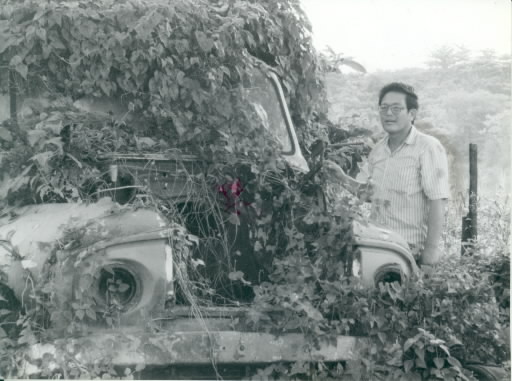2. Irresponsible Handling of Radioactive Substances
Feb. 26, 2013
Chapter 4: India, Malaysia, Korea
Part 2: Thorium Contamination in Malaysia
Part 2: Thorium Contamination in Malaysia
It was nine in the evening when we visited the home of electrician Yoon Siew Hee. He had just come home from work. Yoon lives in the village of Menglembu, close to Bukit Merah, and is a former employee of ARE, where he worked for four years from April 1982, the month the refinery was opened. "I left ARE because I was afraid of cancer," he told us candidly. His wife sat in the room with their five children making bags to sell, occasionally throwing a glance at her husband and saying, "You shouldn't really talk about it," in worried tones. Yoon told us he had been threatened by his former bosses since testifying as a witness for the residents against the company in the High Court in Ipoh in July 1988. Since then he had not spoken to anyone about the refinery.
Yoon agreed to speak to us on hearing that we were Japanese journalists. Hesitantly, he began to tell his story:
"Three times a day I used to go round the plant and check all the electrical fittings. I didn't know anything about radiation, of course, and there were no signs up to warn us of any danger. We had no protective clothing; I used to go home in my work gear. The thorium waste scattered around the grounds was washed out of the pipes into the Serokai River next door." The first time Yoon heard talk of radiation was when a protest in Papan against the waste storage facility was reported in the papers. Even after this incident, the company still kept telling its employees that there was nothing to worry about.
"When I changed jobs my salary dropped from thirteen hundred Malaysian dollars to seven hundred a month; quite a difference, but I figured my life was more important." Yoon told us he had no regrets about leaving his job, but that he was still very worried about his health as well as that of his family.
Ng Toong Foo runs a transport company, and also has a gas station in Menglembu. For two years starting in 1983, he worked under contract to ARE, transporting waste material.
"They told me the stuff was thorium cake, and that it could be used for fertilizer," he told us. "I used to load it on a dump truck and cart it round to an abandoned tin mine at the back of the refinery and dump it. Some of it got thrown in household refuse dumps, or in vegetable patches, even in the river."
Ng claims that he received no instructions from the company regarding where the thorium was to be dumped. "The company knew it was being disposed of in all sorts of places," he added.
Michael Wan, general manager of ARE, disagreed. According to him, specific orders were given about where the waste was to be stored. "The transport company was just dumping it where they felt like it—I'm beginning to regret not supervising them more closely…"
When one of Ng's employees showed signs of burns on his hands from handling the waste, and the locals started to boycott his gas station, Ng broke his contract with ARE.
One still afternoon after a short burst of rainfall, Ng took us to where his contaminated truck had been dumped. Its body was rusted and overgrown with ivy. Nearby were some houses and a car repair business.
Three years previously, an expert from Japan had checked the radioactivity of this truck and found it to be 7.8 rems, well over the limit of 5 rems per year set for workers dealing with radioactive materials.








